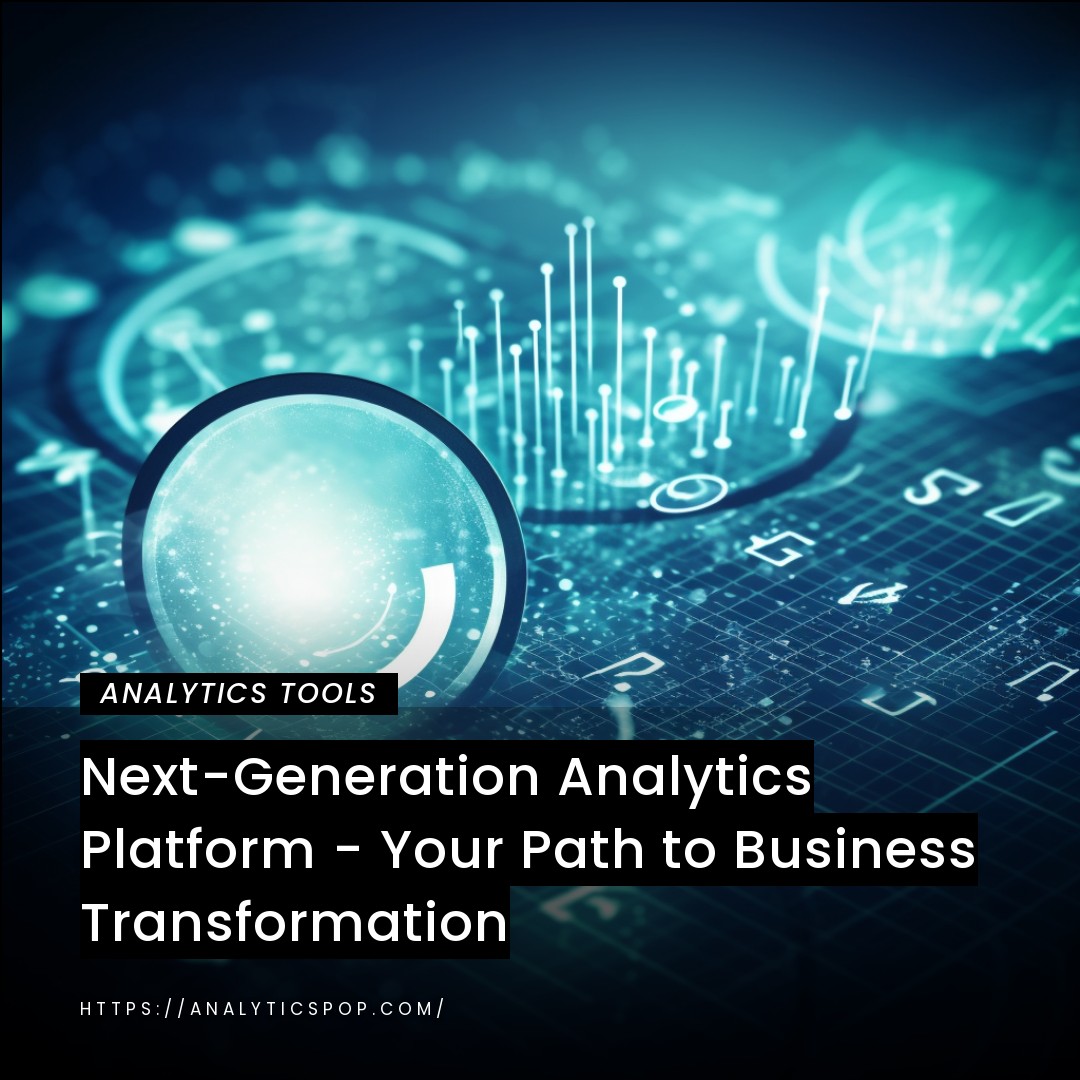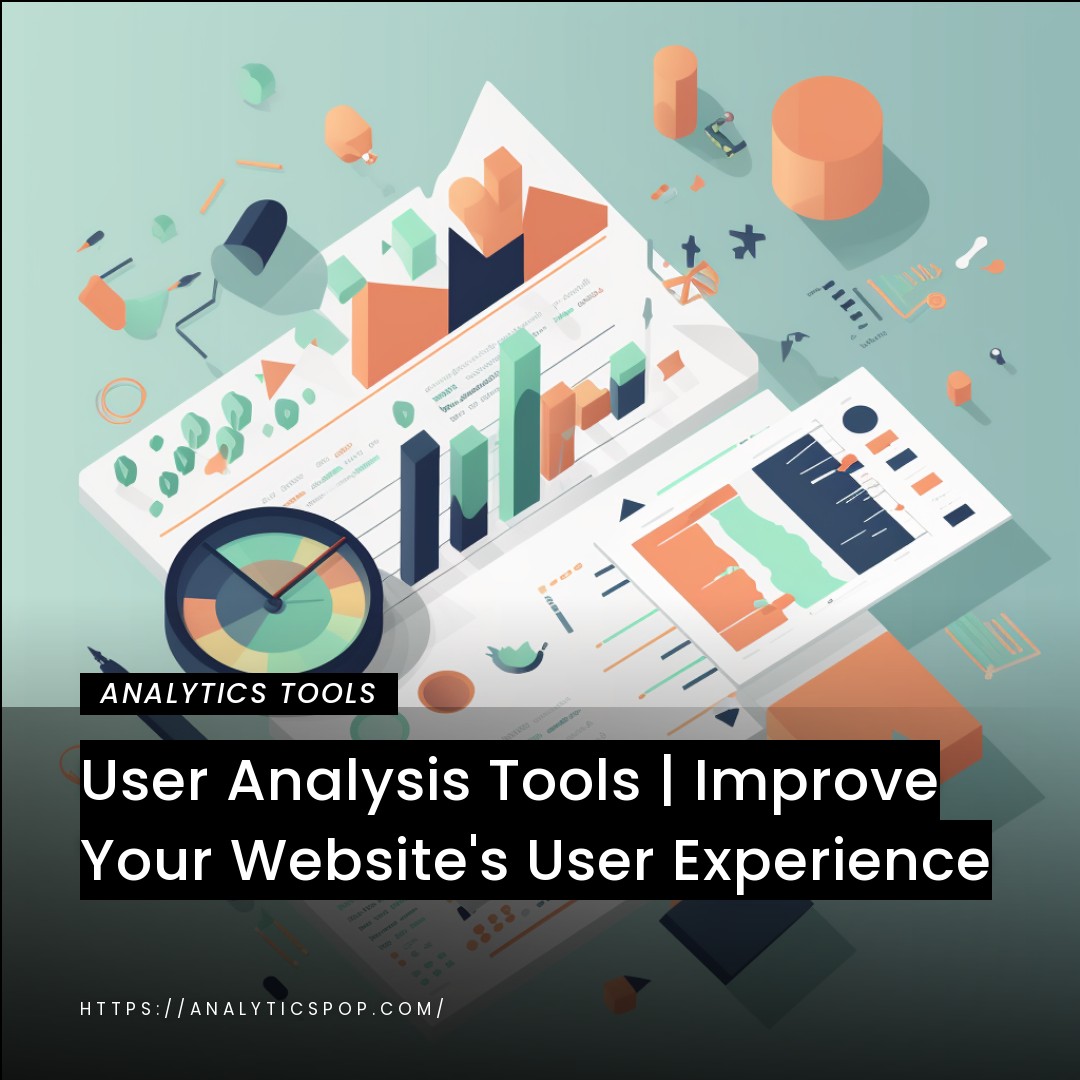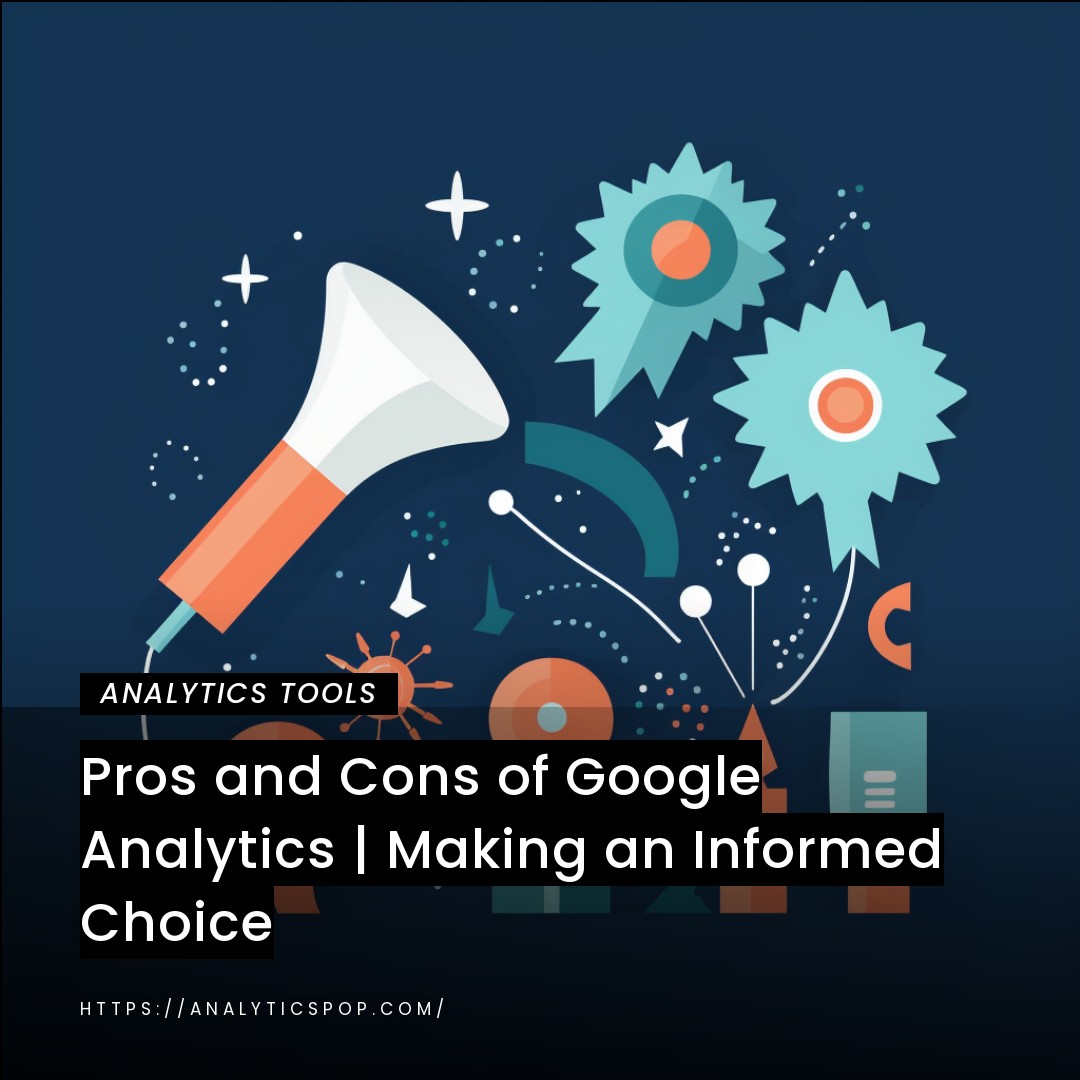As businesses become increasingly data-driven, analytics platforms have become critical tools for decision-making. The next-generation analytics platform is an evolution from traditional business intelligence (BI) tools, providing a comprehensive suite of capabilities for processing, analyzing, and visualizing data in real-time.
One of the most significant advantages of a next-generation analytics platform is its ability to handle large volumes of data from multiple sources, including structured, semi-structured, and unstructured data. With advanced analytics capabilities such as machine learning, artificial intelligence, and predictive analytics, businesses can gain insights into patterns and trends that were previously impossible to detect.
Moreover, next-generation analytics platforms enable businesses to leverage data from various sources, including social media, customer feedback, and third-party data, to develop a holistic view of their operations. By analyzing this data, businesses can identify opportunities to improve customer experiences, optimize supply chains, and reduce costs.
A next-generation analytics platform can help businesses transform their operations by providing robust data analytics capabilities that enable them to make data-driven decisions, improve efficiency, and gain a competitive edge in the marketplace.
Why Use a Next-Generation Analytics Platform?
The rapid growth of data and the complexity of modern business operations have made it challenging for organizations to manage and leverage their data assets effectively. A next-generation analytics platform can provide a comprehensive solution to these challenges, offering several benefits that traditional analytics tools cannot match.
- First, next-generation analytics platforms are designed to handle large volumes of data from multiple sources, including structured, semi-structured, and unstructured data. This enables businesses to gain a holistic view of their operations and identify patterns and trends that were previously impossible to detect.
- Second, next-generation analytics platforms leverage advanced capabilities such as machine learning, artificial intelligence, and predictive analytics. These capabilities enable businesses to perform complex analyses that can help them identify opportunities to optimize their operations, reduce costs, and improve customer experiences.
- Third, next-generation analytics platforms are often cloud-based, offering scalability, flexibility, and accessibility. This means businesses can quickly and easily scale their analytics infrastructure to meet changing business needs and access their data and analytics from anywhere at any time.
A next-generation analytics platform is essential for businesses to effectively manage and leverage their data assets. With its advanced analytics capabilities, scalability, and flexibility, a next-generation analytics platform can help companies to gain a competitive edge by making data-driven decisions and improving operational efficiency.
An overview of the benefits of using a next-generation analytics platform for business transformation
A next-generation analytics platform can be a powerful tool for transforming a business. It provides several key benefits to help organizations optimize their operations and gain a competitive edge in the marketplace.
- First, a next-generation analytics platform can help businesses gain deeper insights into their operations by leveraging advanced analytics capabilities such as machine learning, artificial intelligence, and predictive analytics. These tools enable companies to identify patterns and trends in their data, providing them with actionable insights that can help them make data-driven decisions and optimize their operations.
- Second, next-generation analytics platforms are often cloud-based, providing businesses scalability, flexibility, and accessibility. This means companies can quickly and easily scale their analytics infrastructure to meet changing business needs and access their data and analytics from anywhere at any time.
- Third, a next-generation analytics platform can help businesses improve customer experiences by enabling them to leverage data from multiple sources, including social media, customer feedback, and third-party data. By analyzing this data, businesses can better understand their customers’ needs and preferences and identify opportunities to optimize their products and services to meet those needs.
- Fourth, a next-generation analytics platform can help businesses reduce costs by enabling them to identify inefficiencies and streamline their operations. By analyzing data from multiple sources, companies can identify areas to improve operational efficiency, reduce waste, and cut costs.
A next-generation analytics platform can provide businesses with powerful analytics capabilities, scalability, flexibility, and accessibility, enabling them to gain deeper insights into their operations, improve customer experiences, and reduce costs. By leveraging these benefits, businesses can transform their operations and gain a competitive edge in the marketplace.
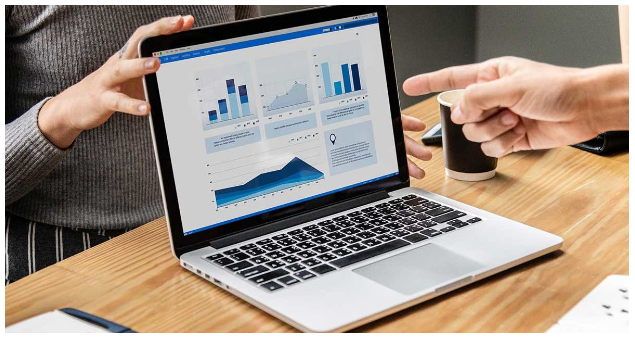
The limitations of traditional analytics platforms and why they may not be sufficient for today's data-driven business needs
Traditional analytics platforms have been around for decades and have played an essential role in providing businesses with insights into their operations. However, with the explosion of data and the increasing complexity of modern business operations, more than traditional analytics platforms may be required to meet today’s data-driven business needs. Here are some limitations of conventional analytics platforms:
- First, traditional analytics platforms are often designed to handle structured data, such as data from transactional systems or databases. They may need help handling unstructured or semi-structured data, such as social media, sensor networks, or multimedia sources.
- Second, traditional analytics platforms often require significant IT resources to manage and maintain, making them inflexible and costly to scale. This can be a substantial limitation for businesses that must quickly respond to changing business needs or market conditions.
- Third, traditional analytics platforms may need advanced capabilities like machine learning, artificial intelligence, or predictive analytics. These capabilities can give businesses a competitive edge by enabling them to identify patterns and trends in their data that would be difficult or impossible to detect with traditional analytics tools.
- Finally, traditional analytics platforms may need help to provide real-time or near-real-time insights, which can be critical for businesses that need to make quick decisions based on changing data.
While traditional analytics platforms have been valuable tools for businesses over the years, more than their limitations may be needed to meet today’s data-driven business needs. A next-generation analytics platform can provide companies with the scalability, flexibility, advanced analytics capabilities, and real-time insights they need to stay competitive.
How next-generation can analytics platforms provide deeper insights and drive business outcomes?
Next-generation analytics platforms offer businesses powerful tools for gaining deeper insights into their operations, customers, and market trends. By leveraging advanced analytics capabilities such as machine learning, artificial intelligence, and predictive analytics, these platforms can provide businesses with insights that were previously impossible to detect.
Here are some ways that next-generation analytics platforms can drive business outcomes:
- First, next-generation analytics platforms can enable businesses to optimize their operations by identifying patterns and trends in their data. For example, by analyzing data from various sources, such as customer feedback, social media, and internal systems, businesses can better understand their customer’s needs and preferences and optimize their products and services accordingly.
- Second, next-generation analytics platforms can help businesses identify new revenue streams and growth opportunities. By analyzing data from multiple sources, companies can identify market trends, new customer segments, and emerging technologies, providing the insights they need to develop new products and services and enter new markets.
- Third, next-generation analytics platforms can help businesses improve their decision-making by providing real-time insights into their operations. By monitoring real-time data, companies can quickly identify and respond to market conditions, customer preferences, and other factors that may impact their operations.
- Finally, next-generation analytics platforms can help businesses improve customer experiences by providing insights into customer behavior, preferences, and satisfaction levels. By analyzing data from various sources, such as social media, customer feedback, and transactional data, businesses can identify opportunities to improve customer engagement and loyalty.
Next-generation analytics platforms can give businesses powerful tools for gaining deeper insights into their operations, customers, and market trends.
By leveraging these insights, businesses can optimize their operations, identify new growth opportunities, improve decision-making, and enhance their customer experiences, ultimately driving business outcomes and increasing their competitive advantage in the marketplace.
Key Features of a Next-Generation Analytics Platform
A next-generation analytics platform offers several key features that enable businesses to manage and leverage their data assets effectively. Here are some of the essential elements of a next-generation analytics platform:
- Advanced Analytics Capabilities: A next-generation analytics platform should offer advanced analytics capabilities such as machine learning, artificial intelligence, and predictive analytics. These tools enable businesses to gain insights into patterns and trends in their data that would be difficult or impossible to detect with traditional analytics tools.
- Data Integration: A next-generation analytics platform should be able to handle data from a variety of sources, including structured, semi-structured, and unstructured data. This can include data from social media, customer feedback, and third-party sources.
- Real-Time Analytics: A next-generation analytics platform should provide real-time or near-real-time analytics, enabling businesses to respond quickly to market conditions, customer behavior, and other factors that may impact their operations.
- Cloud-Based: A next-generation analytics platform should be cloud-based, providing scalability, flexibility, and accessibility. This means businesses can quickly and easily scale their analytics infrastructure to meet changing business needs and access their data and analytics from anywhere at any time.
- Visualization and Reporting: A next-generation analytics platform should provide intuitive visualization and reporting capabilities, enabling businesses to communicate insights to stakeholders and make data-driven decisions easily.
- Data Security: A next-generation analytics platform should offer robust data security and privacy features, protecting sensitive data from unauthorized access or use.
A next-generation analytics platform should offer advanced capabilities, data integration, real-time analytics, cloud-based infrastructure, intuitive visualization and reporting, and robust data security features.
By leveraging these key features, businesses can effectively manage and leverage their data assets, gain deeper insights into their operations, and make data-driven decisions that drive business outcomes.
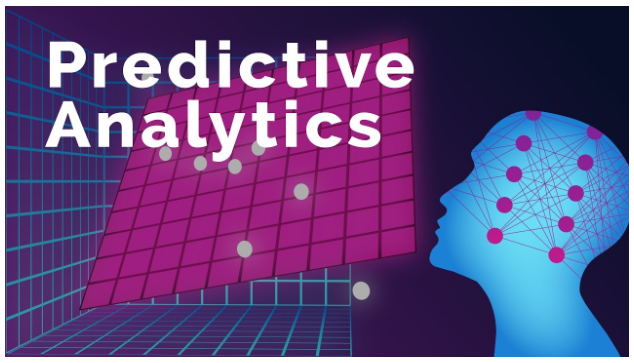
Defining the key features of a next-generation analytics platform, such as real-time data processing, predictive analytics, and machine learning capabilities
A next-generation analytics platform is designed to provide businesses with comprehensive capabilities for processing, analyzing, and visualizing data in real-time. Here are some of the critical features of a next-generation analytics platform:
- Real-Time Data Processing: A next-generation analytics platform should be able to process large volumes of data from multiple sources in real-time or near real-time. This enables businesses to quickly identify patterns and trends as they emerge and make decisions based on the most current data available.
- Predictive Analytics: A next-generation analytics platform should offer advanced predictive analytics capabilities, enabling businesses to identify trends, patterns, and anomalies that may not be apparent with traditional analytics tools. Predictive analytics can help companies to identify potential problems before they occur, optimize operations, and identify new growth opportunities.
- Machine Learning Capabilities: A next-generation analytics platform should offer machine learning capabilities, enabling businesses to automatically identify data patterns and trends without manual analysis. Machine learning algorithms can identify correlations, practices, and anomalies that may not be apparent to humans.
- Data Integration: A next-generation analytics platform should be able to integrate data from various sources, including structured, semi-structured, and unstructured data. This can include data from social media, customer feedback, and third-party sources.
- Cloud-Based Infrastructure: A next-generation analytics platform should be cloud-based, providing scalability, flexibility, and accessibility. This means businesses can quickly and easily scale their analytics infrastructure to meet changing business needs and access their data and analytics from anywhere at any time.
- Visualization and Reporting: A next-generation analytics platform should provide intuitive visualization and reporting capabilities, enabling businesses to communicate insights to stakeholders and make data-driven decisions easily.
- Data Security: A next-generation analytics platform should offer robust data security and privacy features, protecting sensitive data from unauthorized access or use.
A next-generation analytics platform should offer real-time data processing, predictive analytics, machine learning capabilities, data integration, cloud-based infrastructure, visualization and reporting, and data security features. By leveraging these key features, businesses can gain deeper insights into their operations, make data-driven decisions, and stay competitive in the marketplace.
Identifying the pros and cons of each feature and how they can benefit different industries and use cases
Real-Time Data Processing
- Pros: Real-time data processing can help businesses quickly identify patterns and trends as they emerge, enabling them to make decisions based on the most current data available. This can be particularly beneficial in industries such as finance, where real-time data processing can be used to identify market trends and make informed investment decisions.
- Cons: Real-time data processing can be resource-intensive, requiring significant computing power and storage capabilities. This can be a challenge for businesses with limited IT resources or those dealing with large volumes of data.
Predictive Analytics
- Pros: Predictive analytics can help businesses identify potential problems before they occur, enabling them to take proactive measures to mitigate risk. This can be particularly beneficial in industries such as healthcare, where predictive analytics can be used to identify patients at risk of developing certain conditions and provide early interventions.
- Cons: Predictive analytics can be complex and require significant data analysis capabilities. This can be a challenge for businesses without data science expertise or for those dealing with data from multiple sources.
Machine Learning Capabilities
- Pros: Machine learning can automatically identify patterns and trends in data, enabling businesses to gain deeper insights into their operations. This can be particularly beneficial in industries such as manufacturing, where machine learning can be used to optimize processes and identify areas for improvement.
- Cons: Machine learning can require significant computing power and storage capabilities, challenging businesses with limited IT resources. Additionally, machine learning algorithms can be complex and require considerable expertise to implement and manage effectively.
Data Integration
- Pros: Data integration enables businesses to combine data from multiple sources, providing a more holistic view of their operations. This can be particularly beneficial in industries such as retail, where data integration can be used to better understand customer behavior and preferences.
- Cons: Data integration can be challenging, mainly when dealing with data from multiple sources with varying formats and structures. Additionally, data integration can require significant IT resources and expertise.
Cloud-Based Infrastructure
- Pros: Cloud-based infrastructure provides businesses scalability, flexibility, and accessibility, enabling them to quickly and easily scale their analytics infrastructure to meet changing business needs. This can be particularly beneficial in industries such as finance, where cloud-based infrastructure can be used to spin up and test new analytics capabilities quickly.
- Cons: Cloud-based infrastructure can be vulnerable to security breaches, mainly when dealing with sensitive data. Additionally, cloud-based infrastructure can be costly, particularly for businesses dealing with large volumes of data.
Visualization and Reporting
- Pros: Visualization and reporting enable businesses to communicate insights easily to stakeholders, enabling them to make informed decisions based on data. This can be particularly beneficial in industries such as marketing, where visualization and reporting can be used to track campaign performance and identify areas for improvement.
- Cons: Visualization and reporting can be time-consuming and require significant expertise to implement effectively. Additionally, visualization and reporting can be limited by the quality and completeness of the underlying data.
Data Security
- Pros: Robust data security features can help businesses protect sensitive data from unauthorized access or use. This can be particularly beneficial in industries such as healthcare or finance, where data security is a critical concern.
- Cons: Data security features can be costly to implement and maintain, particularly for businesses with limited IT resources. Additionally, data security features can be vulnerable to breaches if not implemented and managed effectively.
The benefits and drawbacks of each feature can vary depending on the industry and use case. However, businesses that leverage next-generation analytics platforms can benefit significantly, including more profound insights into their operations, improved decision-making, and increased competitive advantage.
FAQ's
Q: How can a next-generation analytics platform improve customer experience and engagement?
A next-generation analytics platform can be a powerful tool for improving customer experience and engagement. By leveraging data from multiple sources, including social media, customer feedback, and transactional data, businesses can better understand their customers’ needs and preferences and identify opportunities to optimize their products and services to meet those needs.
Here are some specific ways that a next-generation analytics platform can improve customer experience and engagement:
- Personalization: A next-generation analytics platform can help businesses personalize their products and services to meet individual customers’ unique needs and preferences. Companies can provide tailored recommendations and offers by analyzing customer behavior, purchase history, and preferences, improving customer experience.
- Customer Feedbackeration analytics platform can help businesses collect and analyze customer feedback in real-time, quickly responding to customer concerns and addressing issues before they escalate. This can help companies to improve customer satisfaction and loyalty.
- Omnichannel Engagement: A next-generation analytics platform that can help businesses engage with customers across multiple channels, including social media, email, and chatbots. By analyzing data from these channels, companies can better understand customer preferences and behaviors, enabling them to optimize their engagement strategies.
- Predictive Analytics: A next-generation analytics platform can help businesses predict customer behavior and preferences, enabling them to proactively engage with customers and provide personalized offers and recommendations. This can help companies to improve customer satisfaction and increase customer lifetime value.
- Customer Segmentation: A next-generation analytics platform can help businesses segment customers based on their behavior, preferences, and demographics. This can enable companies to provide tailored offers and recommendations to different customer segments, improving the overall customer experience.
A next-generation analytics platform can help businesses improve customer experience and engagement by personalizing their products and services, collecting and analyzing customer feedback, engaging with customers across multiple channels, predicting customer behavior and preferences, and segmenting customers based on their behavior and preferences.
By leveraging these capabilities, businesses can enhance customer satisfaction, increase loyalty, and gain a competitive advantage in the marketplace.

Q: What are some best practices for ensuring data privacy and security in a next-generation analytics platform?
Data privacy and security are critical when using a next-generation analytics platform, mainly as businesses collect and analyze large amounts of sensitive data. Here are some best practices for ensuring data privacy and security in a next-generation analytics platform:
- Use encryption: Data encryption is a critical component of data security. Ensure all data in transit and at rest is encrypted using industry-standard encryption methods.
- Implement access controls: Ensure that access to data is strictly controlled and that only authorized personnel have access. Use role-based access controls to limit access to sensitive data.
- Conduct regular vulnerability assessments: Conduct routine inspections to identify and address vulnerabilities in your analytics platform.
- Regularly back up data: Regularly back up your data to ensure that data is not lost due to hardware failures or cyberattacks.
- Monitor data access and usage: Monitor data access and usage to detect any unauthorized or suspicious activity.
- Use secure coding practices: Use certain coding practices to develop and maintain your analytics platform.
- Ensure compliance with data protection regulations: Ensure your analytics platform complies with relevant data protection regulations such as GDPR, HIPAA, and CCPA.
- Implement data anonymization: Implement data anonymization techniques to ensure that sensitive data is not exposed to unauthorized personnel.
- Educate employees: Educate your employees on data privacy and security best practices, including data handling policies and data protection regulations.
In summary, ensuring data privacy and security is critical when using a next-generation analytics platform.
By implementing best practices such as encryption, access controls, regular vulnerability assessments, and data anonymization, businesses can help protect their sensitive data from cyber threats and ensure compliance with data protection regulations. Additionally, educating employees on data privacy and security best practices can help to enhance data protection measures.

